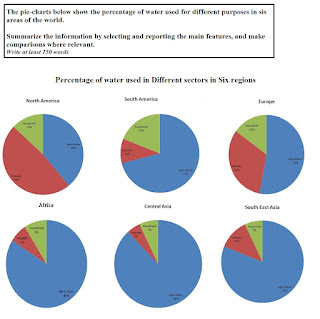The charts below give
information about USA marriages and divorces rates between 1970 and 2000, and
the marital statis of adult americans in two of the years.
Summarize the informartion
by selecting and reporting the main features, and make comparisons where
relevant.
 |
| Ielts Writing Task 1 Graphs - Marriages and Divorces |
Write at least 150 words
The
given charts elucidate information about number of marriages and divorces in
the USA and changes in marital status between 1970-2000.
Overall,
numbers of marriages fell in the given period though between 1970-1980, while
te number of divorce cases initially increased then declined. The marital
status also witnessed changes.
From
1970 to 1980 the number of marriages stayed stable at 2.5 millions, while legal
separations registered a rise from 1 million to nearly 1.4 million. From 1980 to 2000
marriages lesser and lesser American married – numbers fell from 2.5 to 2
million, similarly lesser numbers sought divorces – numbers fell to 1 million.
As
far as the changes in marital status of adult Americans is concerned, there was
a rise in number of people choosing to stay unmarried, from 12% to 20% , and getting a divorce, from
nearly 2% to 10%. There was, however, a 10%
decline in the ratio of people getting married, fell from 70% to 60%, and a
marginal decrease in widowed people, approximately 8% to 6%.





